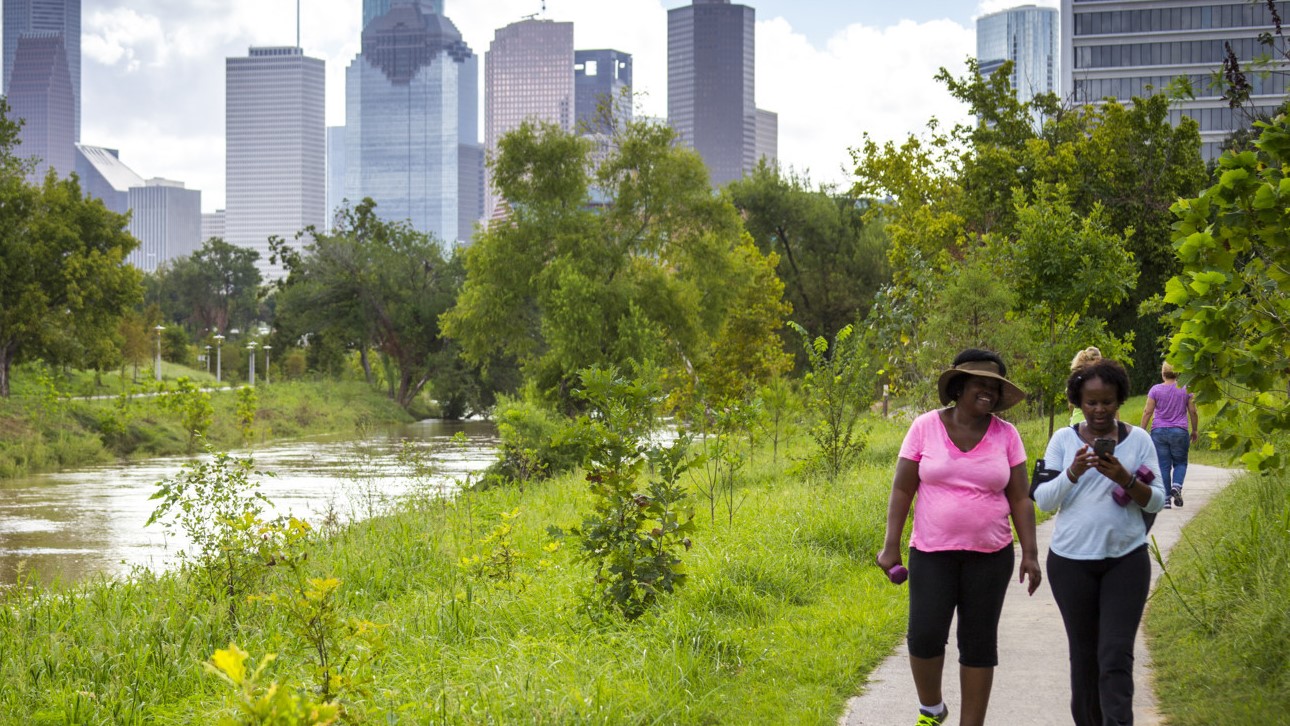Buffalo Bayou Park

Buffalo Bayou Park is a 160-acre linear park stretching for 2.3 miles west of downtown Houston, along the region’s primary river. A $58 million capital campaign transformed the park from a neglected drainage ditch into a citywide showpiece. Its ten acres of trails wind past seven major public art installations, three gardens of native flora, and over four pedestrian bridges; two festival lawns, a dog park, a skate park, a nature play area, a restaurant, and an art exhibit hall draw visitors from afar. Structures were carefully sited above the path of potential floods, while park elements within the valley were designed and built to be submerged during future floods—requiring cleanup, rather than reconstruction, after the inevitable floods. The nonprofit Buffalo Bayou Partnership orchestrated a joint effort between public sector partners and private donors: private donors funded the park, in tandem with public sector improvements to the river channel and adjacent streets, and with a plan for ongoing maintenance. The park’s completion was a milestone that launched a broader effort to reimagine the possibilities of streams across the region.
View Full Case StudyCase Study Summary: Buffalo Bayou Park is a 160-acre linear park stretching for 2.3 miles west of downtown Houston, along the region’s primary river. A $58 million capital campaign transformed the park from a neglected drainage ditch into a citywide showpiece. Its ten acres of trails wind past seven major public art installations, three gardens of native flora, and over four pedestrian bridges; two festival lawns, a dog park, a skate park, a nature play area, a restaurant, and an art exhibit hall draw visitors from afar. Structures were carefully sited above the path of potential floods, while park elements within the valley were designed and built to be submerged during future floods—requiring cleanup, rather than reconstruction, after the inevitable floods. The nonprofit Buffalo Bayou Partnership orchestrated a joint effort between public sector partners and private donors: private donors funded the park, in tandem with public sector improvements to the river channel and adjacent streets, and with a plan for ongoing maintenance. The park’s completion was a milestone that launched a broader effort to reimagine the possibilities of streams across the region.
View Full Case StudyLAND USES
- Connected Regional Bicycle Paths
- Event Space
- Open space
- Restaurant
- Visitor Center
- Water Uses/Amenities
- Wetland
SPECIAL FEATURES
- Amphitheater
- Dog park
- Flash flood area
- Linear park
- Park
- Park system
- Playground
- Public art
- Public-private partnership
- Resilient design
- Restaurants
- Stormwater management
- Trails
- ULI Global Awards for Excellence 2017 Winner
- Visitor center
- Waterways


